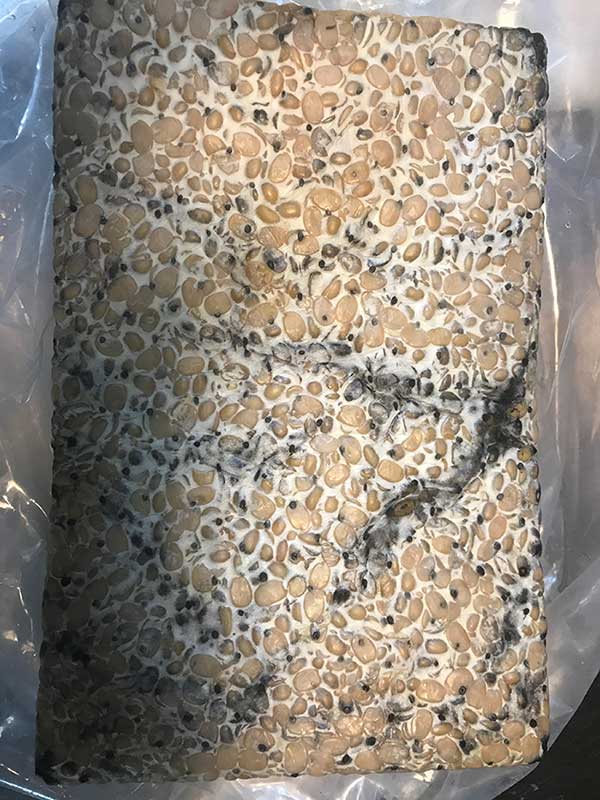Has my tempeh spoiled?
This is, by far, our most common question – so common it deserves its own page on the website. Has my tempeh gone bad?
TLDR: probably not.
It helps to know how tempeh is made to understand why it looks the way it does. In a nutshell, a live active culture (Rhizopus oligosporus) is added to cooked beans and allowed to grow in a controlled environment. This culture is a fungus, a relative of mushrooms, and in the same fungus classification as molds. So, tempeh is technically a mold, but not a scary-get-you-sick kind of mold – rather a beneficial mold.
So when folks say that their tempeh has turned moldy, I say “YES, how wonderful!” Because tempeh can’t be tempeh unless it’s moldy.
It is understandable to think the black mold is a threat because we have been told again and again that black mold = bad. This is simply not true. Many molds produce black spores – some harmful and some helpful. Tempeh is certainly the latter.
The main white fluffy part of the tempeh cake is the mycelium – the “roots” of fungus – and the dark spots and patches are the spores of the tempeh culture letting us know that it has fully matured and ready to eat. I like to compare those black spots to the spots you’d find in blue cheese. Not quite the same, but close enough…
Here is an example of good quality, perfectly normal tempeh (once frozen and then thawed):

See all the black spots and patches? To someone who has never experienced tempeh made the traditional way (not factory made), this might look spoiled but it is actually excellent tempeh! We should embrace the black spots and appreciate their beauty now that we understand that they are sign of strong tempeh fermentation!
So then if tempeh is mold, how would you know if it actually has spoiled? Tempeh usually spoils if it has become contaminated with bacteria which means you probably won’t see that it has spoiled, but rather you can smell that it has spoiled. If it smells like dirty feet, you probably shouldn’t eat. It may also get very slimy as it starts to spoil.
There’s also a chance that another mold species has contaminated your tempeh and will produce its own patches (sometimes dark green, sometimes pink) but they will look obviously different than the normal black patches.
